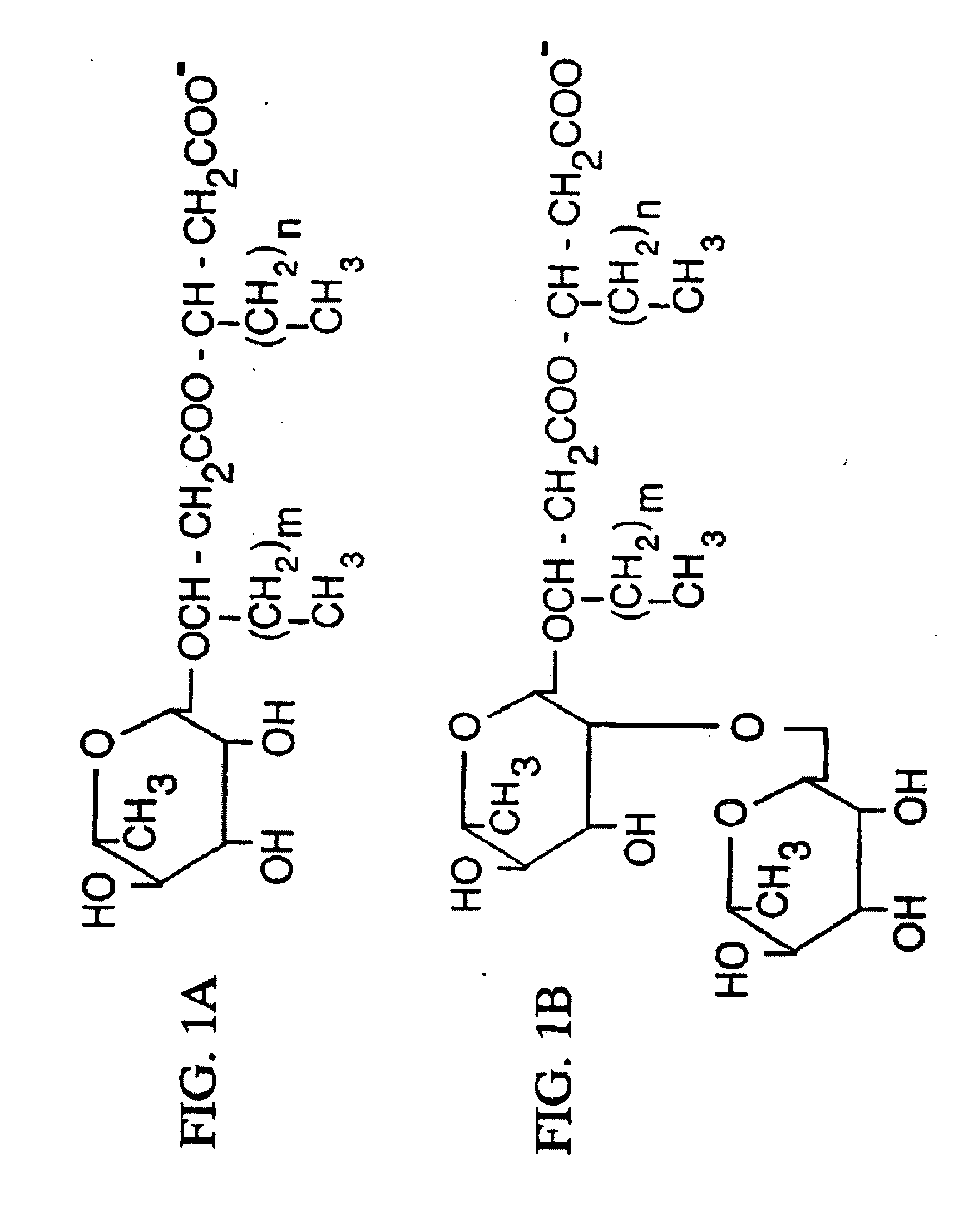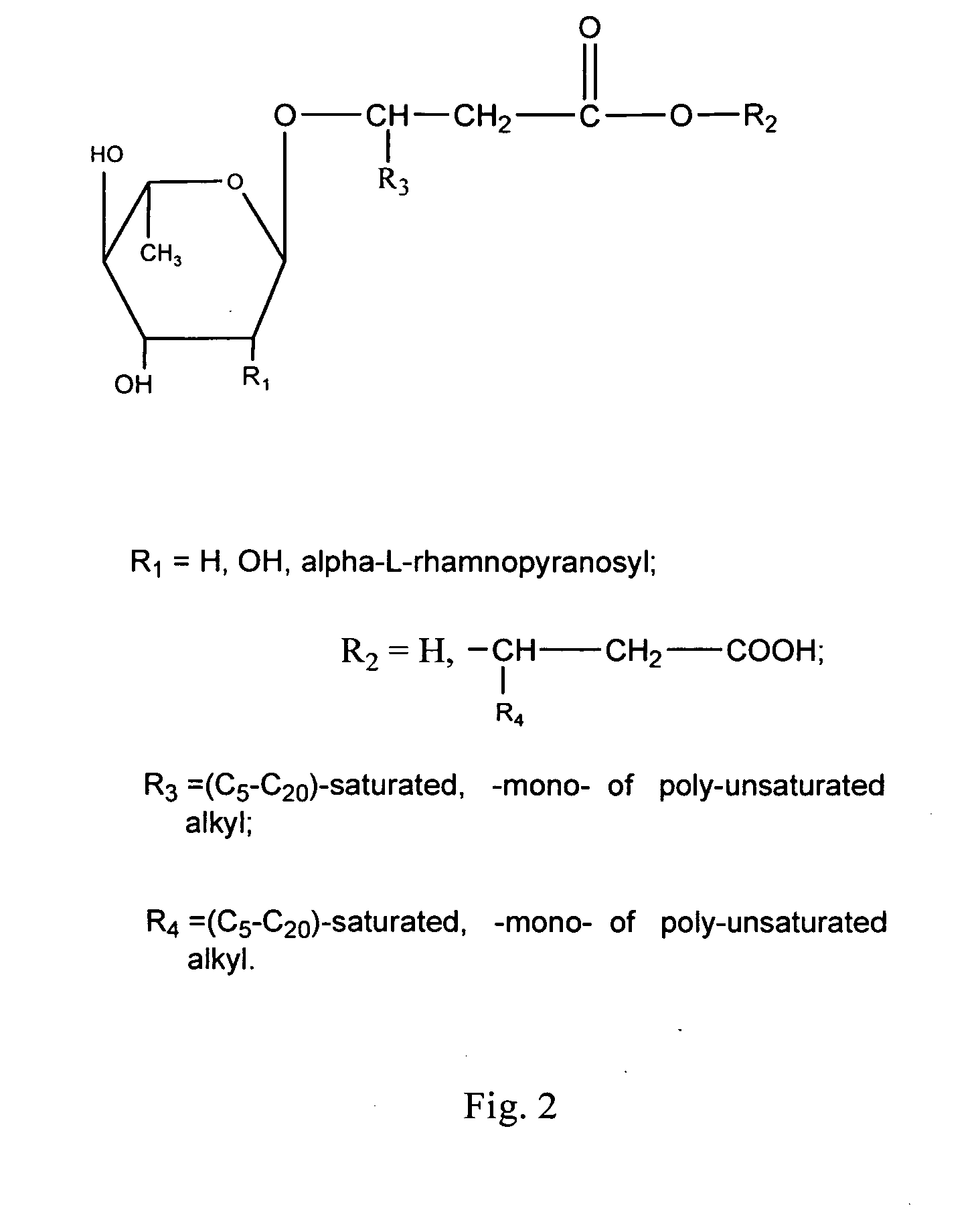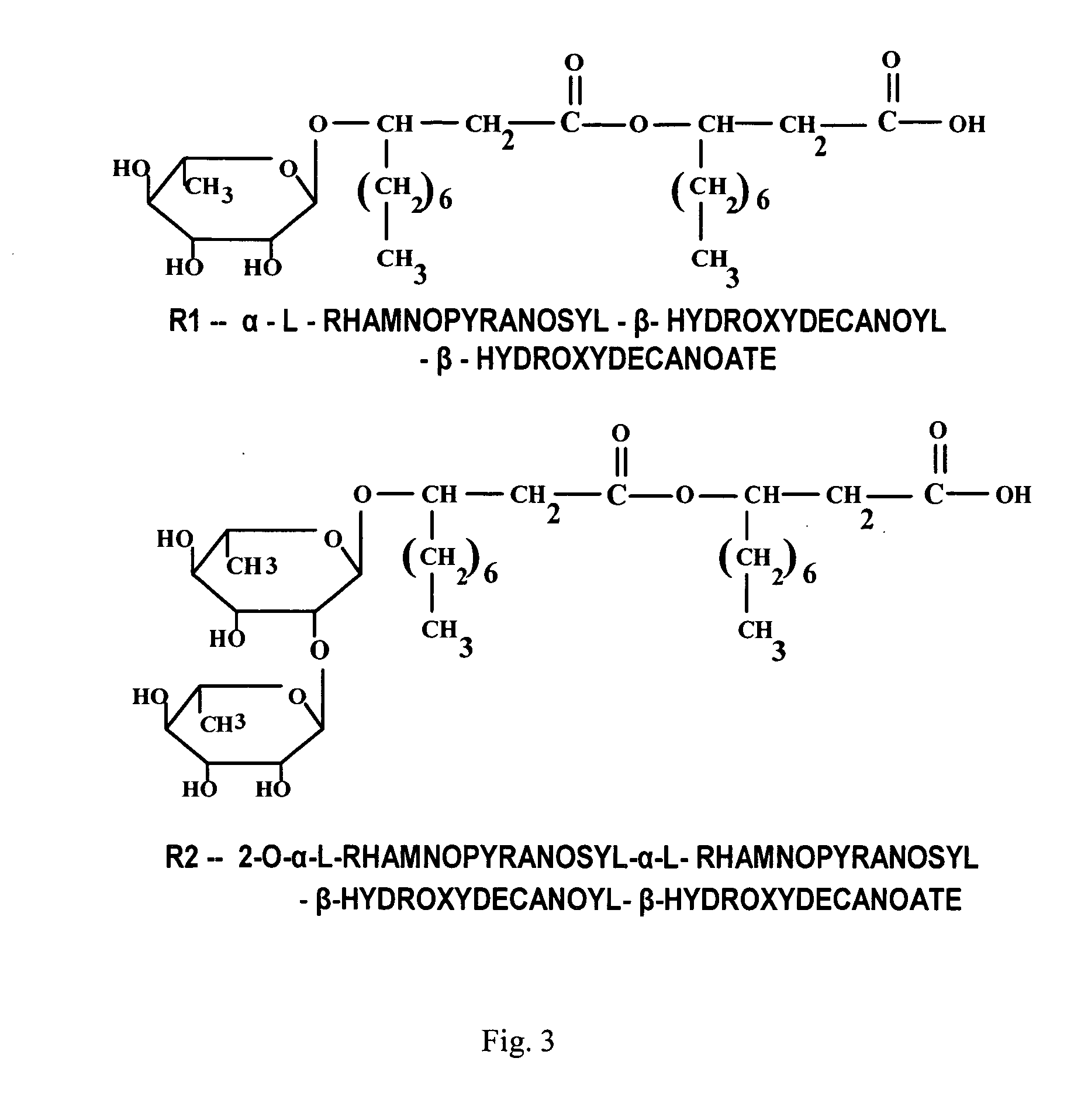Antimycotic rhamnolipid compositions and related methods of use
a technology of rhamnolipid composition and antimycotic effect, which is applied in the field of antimycotic compositions, can solve the problems of serious damage to the agricultural industry, poisoning or death, and the pathogenicity of fungi and fungal diseases, and achieve the effects of improving antimycotic effect, improving antimycotic effect, and avoiding substantial loss of antimycotic
- Summary
- Abstract
- Description
- Claims
- Application Information
AI Technical Summary
Benefits of technology
Problems solved by technology
Method used
Image
Examples
example 1
[0073] Rhamnolipids having the structures illustrated in FIG. 3 and sold under the trademark Zonix™ Biofungicide were obtained from Jeneil Biosurfactant Inc., Saukville, Wis. The stock solution of rhamnolipids contained approximately about 8.5% (by weight) rhamnolipid biosurfactant (85 mg / ml), composed of about 4.25% R1 and about 4.25% R2.
[0074] Syringomycin E, of the formula illustrated in FIG. 4, was purified from P.syringae pv.syringae strains B301D and M1, by the method of Bidwai et. al. (Bidwai. A. P., L. A., Robert C. Bachmann, and Jon Y. Takemoto. 1987. Mechanism of Action of Pseudomonas syringae phototoxin, syringomycin. Plant Physiol. 83:39-43.) Concentrations of SRE utilized included 10.3 mg / ml, 5.6 mg / ml and 2.4 mg / ml.
[0075] A range of pseudomycin components are available from Eli Lilly (Indianapolis, Ind.) or as described in the aforementioned '188 Patent, several representatives of which are provided in FIGS. 5A-C.
example 2a
[0076] Disk diffusion methods similar to those described by the NCCLS protocols for antifungal testing (Washington, G. L. W. a. J. A. 1995. Antibacterial Susceptibility Tests: Dilution and Disk Diffusion Methods, p. 1327-1341. in P. R. Murray (ed.), Manual of Clinical Microbiology, sixth ed.) were used. FIGS. 2(A) through 2(D) illustrate typically observed result assessments for antimicrobial combinations using the disk diffusion method.
[0077] Tested fungi, utilized in the examples that follow, were grown in RPMI Medium and adjusted to 5×104 CFU / ml, and transferred onto solid agar medium of the appropriate growth medium. The cultures were spread over the surface as a thin film. Four millimeter-diameter sterilized paper disks were deposited on the surface and syringomycin E and rhamnolipids were applied on disk 1 and disk 2, respectively (in approximately about 7 to about 10 μl aliquots). The distance between the disks was equal to the sum of radii of zones of inhibition of the drug...
example 2b
[0078] The checkerboard method is used frequently to evaluate antimicrobial combinations in vitro (Lorian, V., M. D. 1996. Antibiotics in Laboratory Medicine, 4th ed.). The tests were easily performed at the laboratory level by using the microdilution method. The results obtained from this study provided a better understanding of the nature of the interaction between SRE and rhamnolipids.
[0079] The checkerboard method is described by Sabath et al. (Sabath, L. D. 1967. Synergy of antibacterial substances by apparently known mechanisms. Antimicrob. Agents Chemother. 7:210-7.) and Garrod et al. (Garrod L. P. and P. M. Waterworth. 1962. Methods of testing combined antibiotic bactericidal action and the significance of the results. J. Clin. Pathol. 15:328-38.). A 96-well plate was used to determine the fractional inhibitory concentrations (FICs). Serial twofold dilutions of SRE and rhamnolipids were prepared separately. Then 25 μl of different concentrations of syringomycin are added in...
PUM
| Property | Measurement | Unit |
|---|---|---|
| concentration | aaaaa | aaaaa |
| concentration | aaaaa | aaaaa |
| concentration | aaaaa | aaaaa |
Abstract
Description
Claims
Application Information
 Login to View More
Login to View More - R&D
- Intellectual Property
- Life Sciences
- Materials
- Tech Scout
- Unparalleled Data Quality
- Higher Quality Content
- 60% Fewer Hallucinations
Browse by: Latest US Patents, China's latest patents, Technical Efficacy Thesaurus, Application Domain, Technology Topic, Popular Technical Reports.
© 2025 PatSnap. All rights reserved.Legal|Privacy policy|Modern Slavery Act Transparency Statement|Sitemap|About US| Contact US: help@patsnap.com



